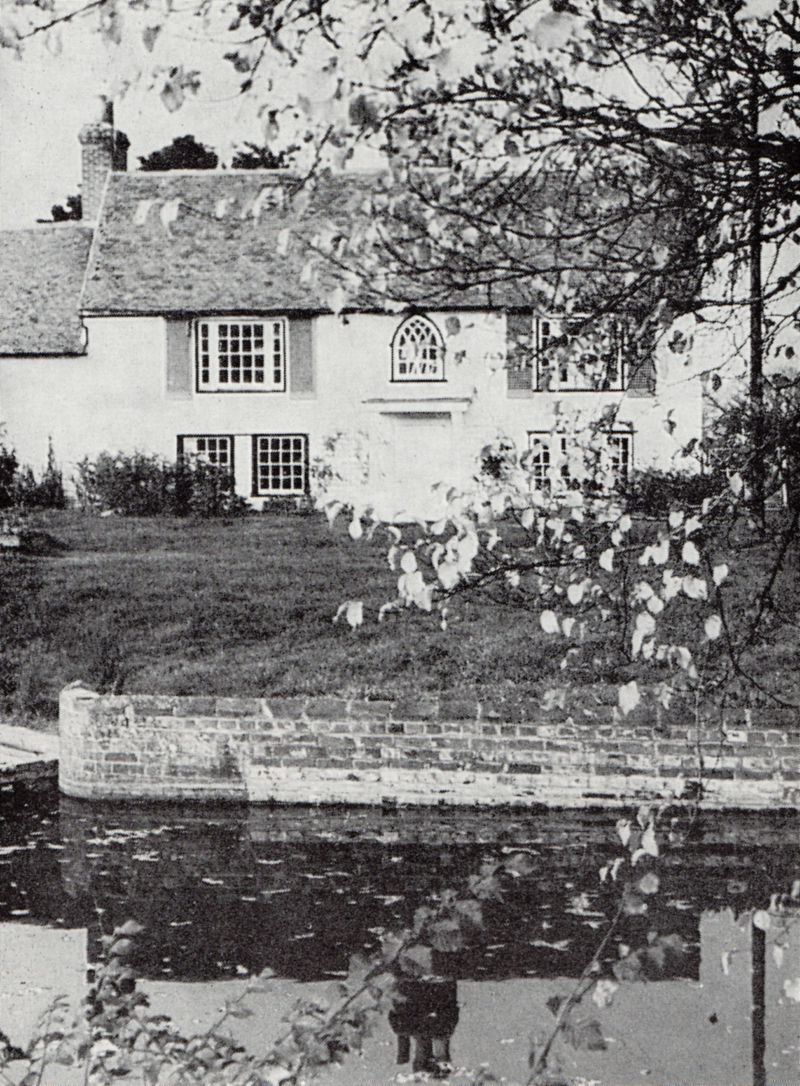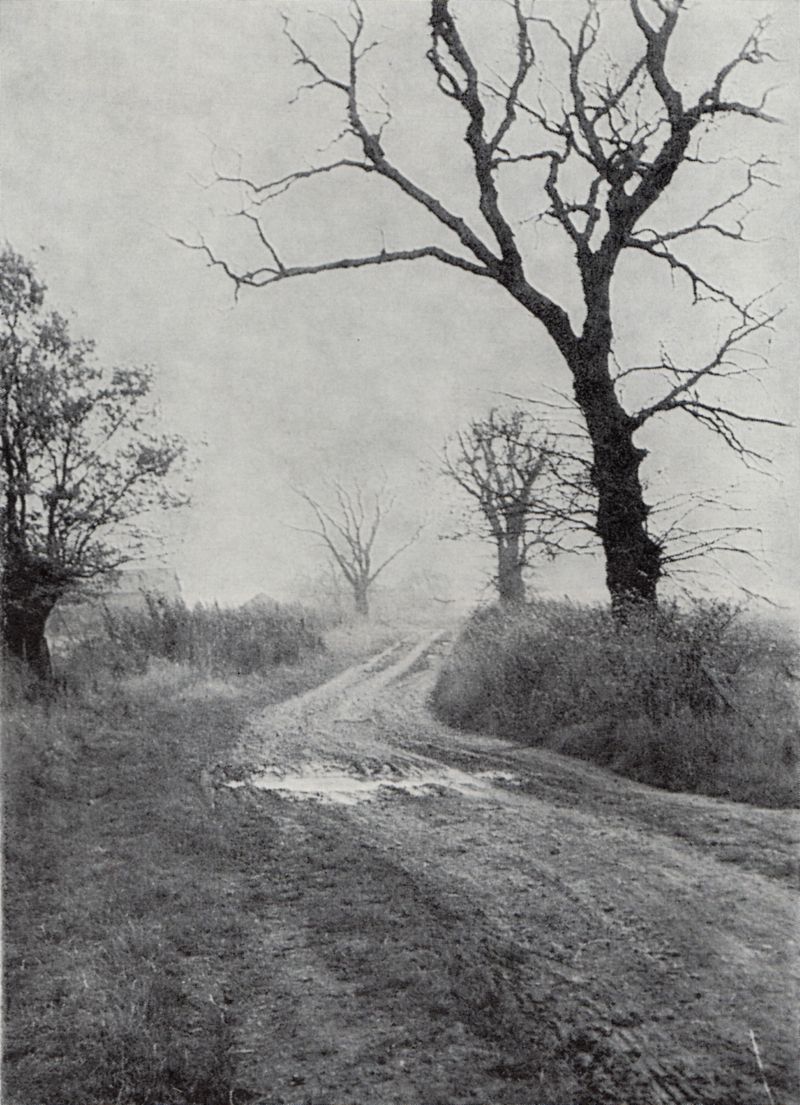
One of the attractive farmhouses on the Peldon road at Great Wigborough, a pleasant village overlooking the
salt marshes, seven miles from Colchester towards Maldon.
When the Benedictine abbess of Barking was retired on a pension of 200 marks her manor of Wigborough was granted to
Thomas Lord Cromwell, Earl of Essex and the most bitterly hated man in England.
A few months later not all his abject pleas for mercy could save his head being literally hacked from its body by a
clumsy - handed executioner. So did Henry VIII reward a fawning servant who had enriched the royal treasury and
actively participated in the judicial murders of Bishop Fisher, Sir Thomas More, and many others, including the
immoral Anne Boleyn.
The ferocity of the Tudors is a unique fact in the history of England. Fifteen years after Cromwell's wretched end,
in the reign of Mary Tudor, two husbandmen of Great Wigborough, John Ardeley and John Simson, were arraigned of
heresy at St. Paul's, and, thereafter returned to Essex and burned alive.
Early in Elizabeth`s reign Wigborough was granted to Thomas Howard, Duke of Norfolk, but wealth and position soured
his loyalty. An abortive courtship of the captive Mary Queen of Scots, some talk of an invasion by Spain, and he
ended up on Tower Hill in the first days of June 1572, and all after a trial at which he had no counsel and did not
even see his accusers.
* * *
The next Thomas Howard did better. Knighted at sea because of his valour in the battle of the Armada, and named by
Queen Elizabeth "her good Thomas", he had Wigborough restored to him in 1597.
James I created him Earl of Suffolk, which honour the earl repaid by discovering the Gunpowder Plot and later by
defrauding the royal revenue of £240.000! For this he was fined £30,000, but as it was finally reduced to £7,000
he must be called a lucky man.
Grandson James Howard fought for Charles I And Was Earl Marshal at the Coronation of the second Charles. In between
times he narrowly escaped impeachment by Cromwell`s parliament, and sold Wigborough to John Aylett and Chaloner Chute.
If Mr. Chute had a great reputation as a barrister he had no great inclination for work, so when the fancy took him
he just told his clerk that he would not be practising this term and took himself off to his own enjoyment - and,
lucky man, when he came back he always found his practice undiminished.
On January 27, 1659, he was elected Speaker of the House of Commons, but eleven weeks later this "excellent orator,
a man of great parts and generosity" was dead.
Nowadays Abbess Hall manor is Abbotts Hall Farm, a red - brick place with some seventeenth century joists, a straight
lane flanked by gorgeous rose trees, and pig - houses where they breed pedigree Large Whites.
Whatever a pig costs these times it is not as cheap as in 1651, when an intruder from Peldon, a certain Mr. Brown, was found not guilty of stealing a sow worth 10d. Pigs must have been very common, because the ten geese Edward Robinson stole were also valued at 10d. each. Eight years later the same man was stealing eight goats to the total value of 8/-.

The pleasant farmhouse at Moulsham Farm, Great Wigborough. A manor house has stood here since before Domesday.
A mile and a bit north - east, as the crow flies, is Moulsham Farm, held as a manor in Edward the Confessor`s day by Aluric, a freeman.
At Domesday it was held by the Norman Hugh de St. Quinten, and in the seventeenth century by John Peake, a Lord
Mayor of London, and that about sums up its history.
Most of the farmhouse is seventeenth century, with a gable end of timber framing and pink plaster. The red gables
are much faded, and some parts of the building have a lean, crooked look, an aspect not improved by the earthquake
of Tuesday morning, April 22, 1884. Then so many tiles were shaken off that they had to cover the roof with haystack
cloths. In the district about, some twenty other farms and homesteads suffered equivalent damage, a chimney crashed
through the school roof, and St. Stephen`s fifteenth - century tower was badly cracked on two sides.
However, sixteen months later, when the rain stopped, the vicar`s wife laid the foundation stone of a new tower
before a large crowd and while a choir accompanied by a harmonium sang "Brightly gleams our banner".
Since then the chancel has been rebuilt and adorned by a screen of oak, carved as delicately as lace. On the ancient
hammer - beams of the roof eight oaken, gold - gilded angels add a rather gay look to this grey church.
There are a couple of fifteenth - century holy - water stoups, a font of the same date, and one old brass, but the
chief interest is the series of photographs and a remnant of the 680 foot - long German Zeppelin L33, which, damaged
by gunfire, came down near New Hall cottages during the early hours of Sunday, September 24, 1916.
Immediately they landed the crew set fire to the envelope and then set out for Colchester. Actually they were taken
in charge at Peldon and lodged on Mersea, but meanwhile the dirigible, a giant ruin of twisted framework, spread
over two fields, completely blocking the road.
In the succeeding weeks, apart from governmental high - ups, 250,000 people crowded into Wigborough to see the
wreckage, and from them a Mr. Huntley collected £74 for the Red Cross, just about a farthing to every four persons.

A cart-track over the marshes near Great Wigborough, where the mists are slow to disperse
St. Stephen's, on its hilltop, has a vast view of the salty creeks of the Blackwater, the Abberton reservoir, and
the heavy, tenacious loam of this part of Essex.
Up here, when all England was breathless for the arrival of the Spanish Armada, and again when Napoleon's army, bag
and baggage, lay massed at Boulogne, a great mound of faggots, straw and tar barrels waited to be ignited.
During the last war, when a different enemy threatened with new amd more frightful methods, there was no beacon her,
but quiet men with headphones and binoculars scanned the skies.

Hyde Farm at Great Wigborough is a red-brick house in attractive autumn tints.
Beeches, chestnut, oaks and lots of elms line the road to Hyde Farm, and elegant place of gable ends, dormer
windows, towering chimneys and just a bit of timber and plaster.
In autumn the leaves, curled, brittle, red as rust, lie thick among the trees, or heap up at the lane`s verge. It is
a mellow landscape; the sun and shadows are less clearly defined, there is a glimpse of blue among the tree - tops,
and there is always the smell of garden bonfires with their spirals of blue smoke.
Some of the birds have gone to other climes, but as compensation there is the crisp, raspy chuckle of dead leaves
stirred by the wind or scuttering madcap up the lane. Sight and sound combine to make a gracious, golden scene.
It is the same autumnal season on the saltings and the marshes beyond Little Wigborough, yet it has a bleaker
aspect. St. Nicholas's church - small, wizened, with a long list of rectors that starts with Adam, parson of
Wiggebergh, 1272, several three - light fourteenth - century windows and an ancient north porch, rather piebald -
looking since its restoration with bright yellow stone - has the grey mists of autumn in its fabric.
Along the rough lanes to Copthall salting, and the other way, to Sampson`s Creek, tractors have woven abstract
patterns in the soft soil. Wild carrot, dandelion, yellow ragwort and purple hardheads drowse senilely in the thin
sunshine, gradually nodding off to death.
Seagulls ( more grey than white now that the glare of midsummer has gone ), peewits and house - martins swoop and
glide and flitter across a sad, flat landscape. Ricks, once heaped cubes of dry, golden hay, have sunk down into
vast moulds, like elderly matrons.
Because the winds blow cold, sometimes with raw ice in their breath, the oaks, now that their leaves have gone, appear remarkably knobbly, stunted and gnarled, as though shrunk by coldness. The puddles in the field furrows and in the lanes have a yellowy look, and over some of the larger puddles alga is quick to cast a green film.
Skylarks may sing, maybe with a subdued exuberance, and rooks circle the bare elms, perhaps a little less
vociferously, the sun may shine, and white clouds drift slowly across a blue sky, yet two fields away a soft
mistiness waves round the tree - boles and clings to the chocolate - coloured earth.
That mistiness will in days to come grow closer knit, cold and clammy, stifle all sound and turn every naked bush
and tree into a phantom.
Back among the copses and small woodlands and the wide, heavy - earthed fields of Great Wigborough, one thinks of
autumn as following the summer. Here on the flat, lonely marshland and by the sea - walls of the creeks, autumn
becomes a prelude to the bitterness of winter. That is the difference between the two.
From Essex Countryside magazine March 1965, pages 284 to 286, transcribed by Joe Vince July 2022.
|